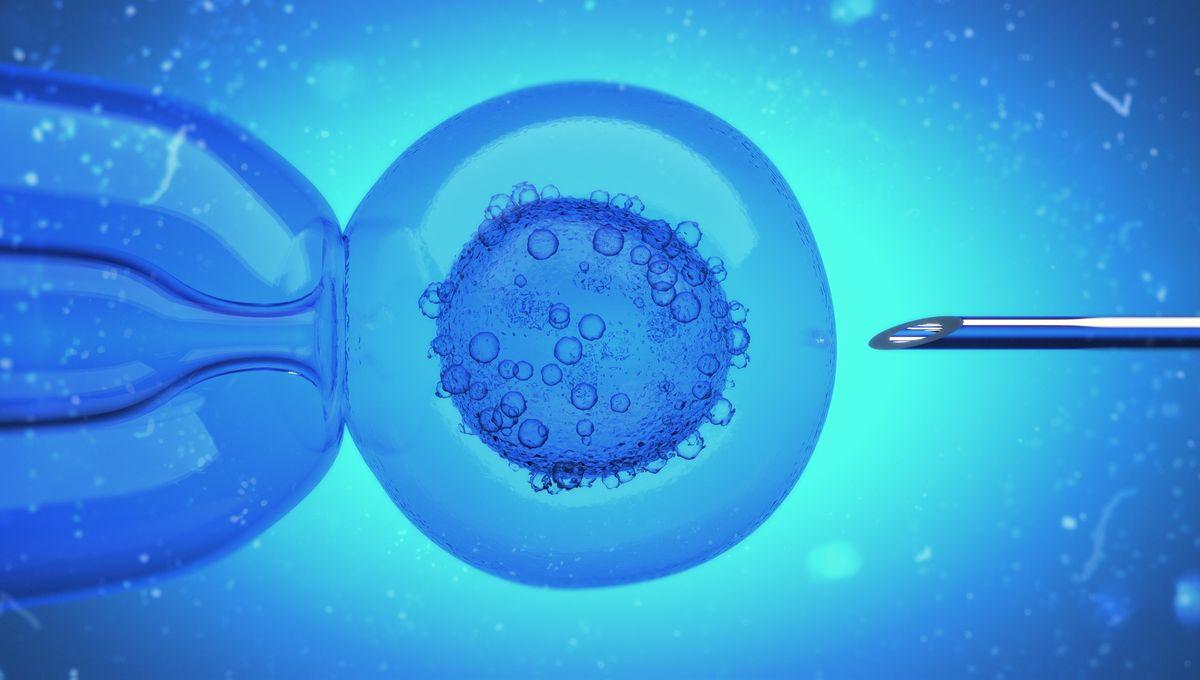A technique to allow women who carry diseases in their mitochondrial DNA to have healthy children has been performed successfully eight times since being legalized, two papers have announced. With one pregnancy having led to identical twins, the work has led to eight healthy babies, as well as one pregnancy underway.
We inherit most of our genes from our parents’ chromosomes in the cell nucleus, with each chromosome carrying one copy from the father and one from the mother. However, a little over 0.1 percent of our genes are transmitted through the mitochondria that power the cell. It is generally thought that mitochondrial DNA is inherited entirely through the egg, i.e. from the mother, although one astonishing paper found evidence of exceptions. Unfortunately, while mutations anywhere in the genome can have serious consequences, mitochondrial variations can carry particularly serious effects, since mitochondria provide the energy to power cells. Many aspiring mothers carrying mitochondrial diseases give up on having children, or use eggs with another woman’s DNA. However, pioneering research at Newcastle University has demonstrated another way. Almost 30 years ago researchers took a cell from a donor and transferred the mitochondria to an egg taken from a woman with mitochondrial disease. Ordinary IVF techniques were then used to fertilize the egg with sperm from the woman’s partner, at which point it was implanted in the mother. The result was Alana Saarinen, hailed as the :”girl with three biological parents”. Several other children were conceived this way. Like Saarinen, they have avoided the diseases their mother carried. Nevertheless, several of these children conceived in the 1990s through what is known as cytoplasmic transfer, or mitochondrial replacement therapy, have other genetic diseases or experienced developmental disorders. It remains unclear if this was just bad luck – such conditions exist in any population – or if the process raised the risk. Combined with the idea the work was “playing God”, or could lead to undesirable applications, the process was halted for almost two decades, until a review and extensive legislative battle led to legalization by the UK Parliament in 2015. Now the results of the first mitochondrial replacement IVFs performed with legal backing have been announced. Rather than use an ordinary cell from a donor, the process was performed through “pronuclear transfer”. The nuclear genome was taken from the mother’s egg and transferred into an egg from a donor without mitochondrial disease, which had previously had its own nuclear DNA removed. Both eggs had been fertilized with the father's sperm, prior to the transfer None of the four boys and four girls born this way have any of the mitochondrial diseases their mothers would normally have passed on. Moreover, the babies were also healthy at birth and have so far met developmental guidelines. Illnesses some have experienced passed without unusual intervention. Nevertheless, observations are planned at least until the age of 5. Although the children’s blood sometimes has some of their mother’s mitochondrial DNA (up to 16 percent in the highest case) the predominance of healthy DNA gives them the energy they need. "As parents, all we ever wanted was to give our child a healthy start in life. Mitochondrial donation IVF made that possible. After years of uncertainty this treatment gave us hope – and then it gave us our baby. We look at them now, full of life and possibility, and we're overwhelmed with gratitude. Science gave us a chance,” said the mother of one of the girls in a statement. “This breakthrough has lifted the heavy cloud of fear that once loomed over us,” said the mother of one of the boys. The names of both families have not been released. "Mitochondrial disease can have a devastating impact on families. [This] news offers fresh hope to many more women at risk of passing on this condition who now have the chance to have children growing up without this terrible disease,” said Professor Sir Doug Turnbull of Newcastle University, who was part of the team to develop the technique. Efforts continue towards gene therapy to fix the mitochondrial diseases that would otherwise be transmitted, but this work is less advanced than the approach used here, leaving around 5,000 babies to be born each year with associated diseases. Other parents opt not to have children to avoid the risk. Rather than undergoing pronuclear transfer, some mothers at lower risk of transmitting mitochondrial disease in the same program underwent ordinary IVF and preimplantation genetic testing (PGT) of embryos. This has led to 18 births within the program. Six of the mothers between the two groups had previously given birth to a child affected by mitochondrial diseases. For all the benefits the pronuclear transfer provides, the proportion of mothers who experienced successful pregnancies was lower than among those who underwent PGT. The reasons for this are only partly understood. “The published results are very valuable, but some scientists will be a little disappointed that so much time and effort has, so far, only led to the birth of 8 children,“ commented Professor of Reproductive Genetics at the University of Oxford Dagan Wells, who was not directly involved in the work, for Science Media Centre. Some of the women took part in the program because they have family members with mitochondrial disease, but others have relatively mild forms of the disease themselves. The authors note there is a “theoretical risk“ of pregnancy exacerbating these symptoms, but so far no related complications have been reported. The authors also note that many of the women deemed eligible for pronuclear transfer or PGT opted not to go ahead at this time after being counseled on what is involved. The results of the program have been announced in two papers in The New England Journal Of Medicine.





